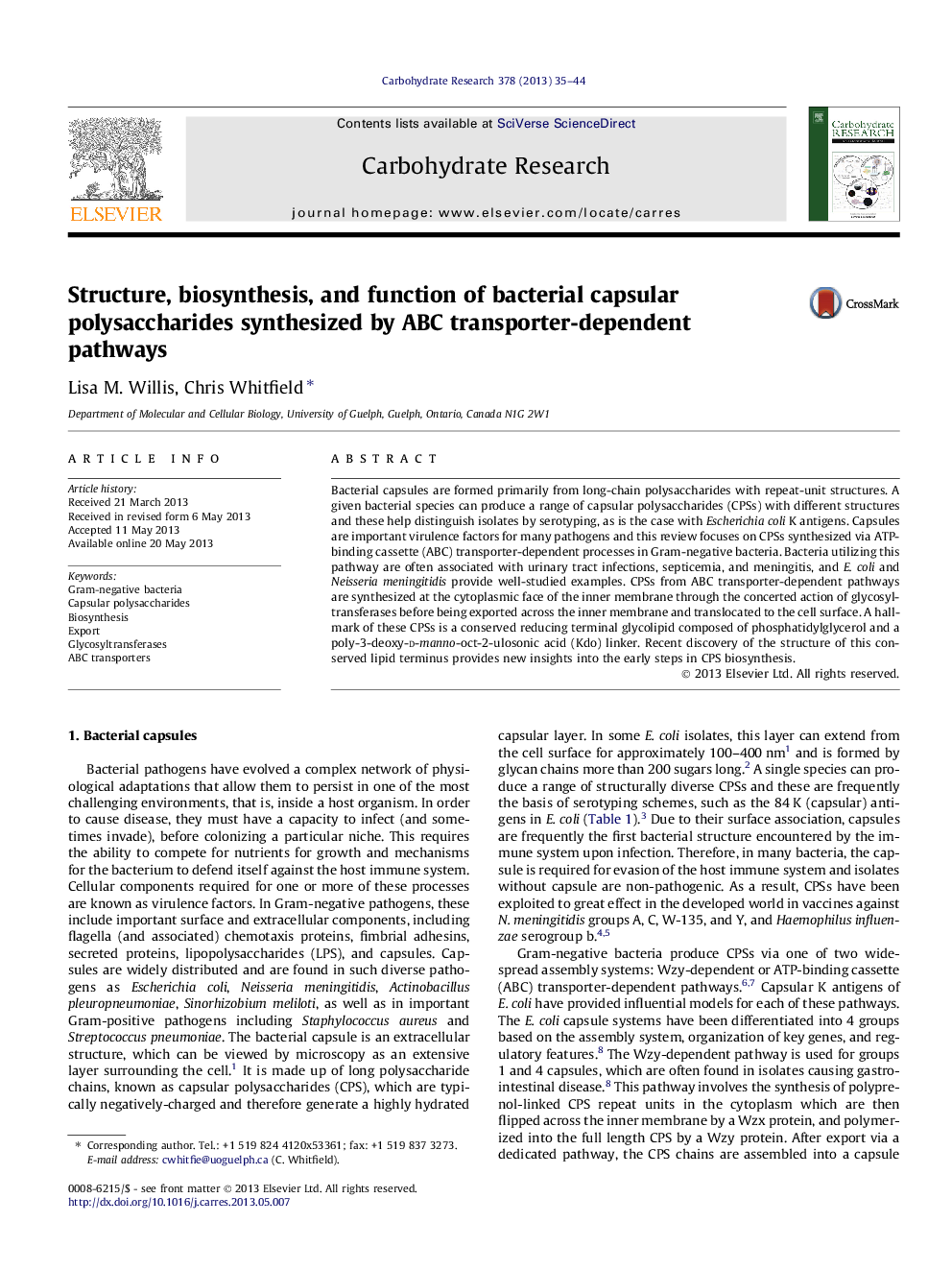| Article ID | Journal | Published Year | Pages | File Type |
|---|---|---|---|---|
| 1383807 | Carbohydrate Research | 2013 | 10 Pages |
•Many pathogenic bacteria produce capsular polysaccharide (CPS) virulence factors.•The ATP-binding cassette (ABC) transporter-dependent CPS biosynthesis pathway is widespread.•CPSs biosynthesis is completed in the cytoplasm prior to export to the cell surface.•CPS export requires a transenvelope multiprotein complex, including the defining ABC transporter.•Characterized CPS examples contain a conserved glycolipid at the reducing terminus of the glycan.
Bacterial capsules are formed primarily from long-chain polysaccharides with repeat-unit structures. A given bacterial species can produce a range of capsular polysaccharides (CPSs) with different structures and these help distinguish isolates by serotyping, as is the case with Escherichia coli K antigens. Capsules are important virulence factors for many pathogens and this review focuses on CPSs synthesized via ATP-binding cassette (ABC) transporter-dependent processes in Gram-negative bacteria. Bacteria utilizing this pathway are often associated with urinary tract infections, septicemia, and meningitis, and E. coli and Neisseria meningitidis provide well-studied examples. CPSs from ABC transporter-dependent pathways are synthesized at the cytoplasmic face of the inner membrane through the concerted action of glycosyltransferases before being exported across the inner membrane and translocated to the cell surface. A hallmark of these CPSs is a conserved reducing terminal glycolipid composed of phosphatidylglycerol and a poly-3-deoxy-d-manno-oct-2-ulosonic acid (Kdo) linker. Recent discovery of the structure of this conserved lipid terminus provides new insights into the early steps in CPS biosynthesis.
Graphical abstractFigure optionsDownload full-size imageDownload as PowerPoint slide
